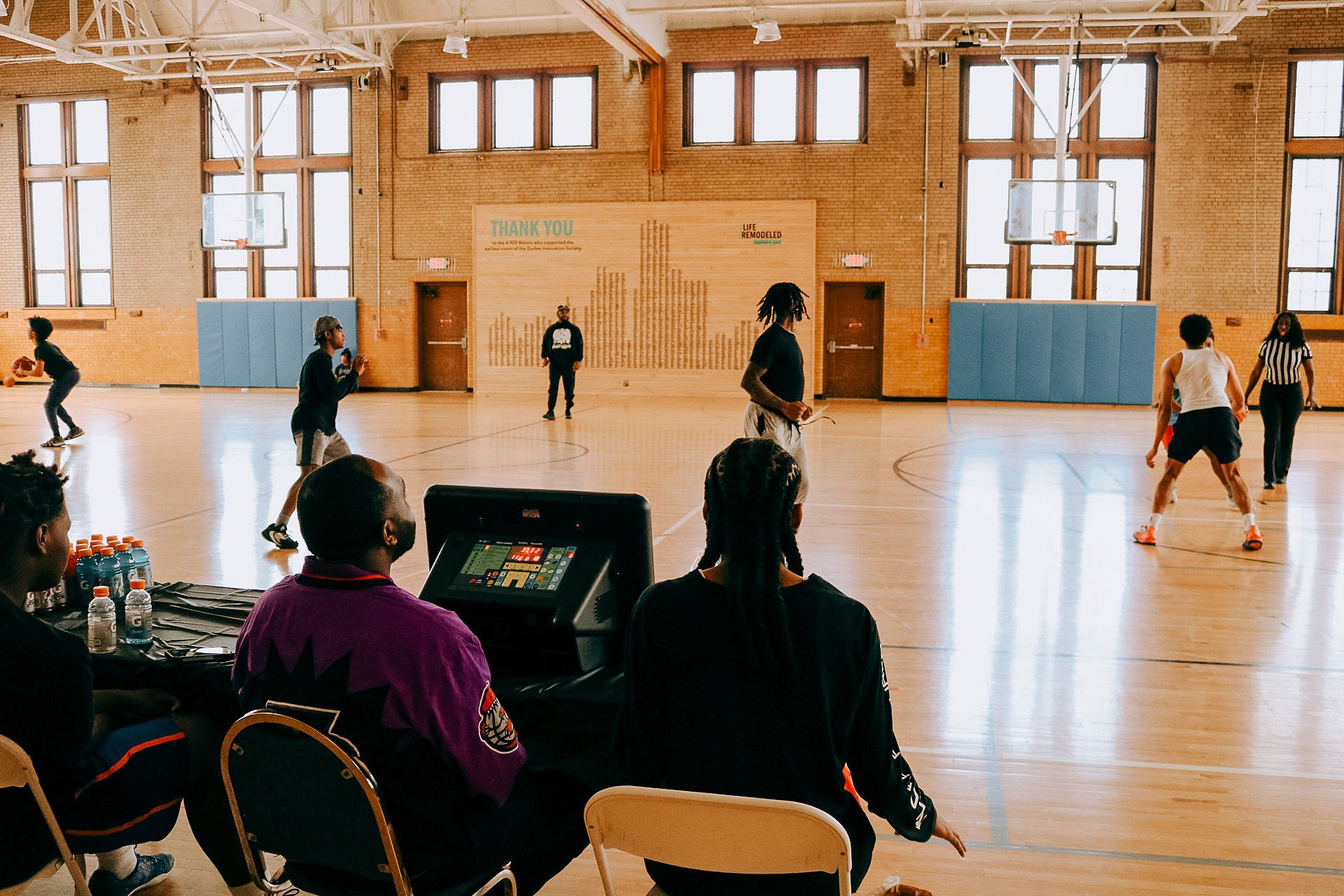A Psychological Analysis of Stress Reduction in Teens and Young Adults through Basketball
By: Terrence Washington
Introduction
The Austin Foundation, dedicated to eradicating educational barriers, designed the March Mania event as a platform to address the high stress levels often faced by teens and young adults. This basketball event combined fun, food, friendly competition, and exercise to engage participants actively and reduce their stress.
Event Overview
March Mania was structured as a three-on-three, bracket-style basketball tournament held at the Durfee Innovation Society in Detroit, MI. The event saw the participation of 26 young males aged 15-22. It featured a main tournament and a three-point contest, culminating in a championship round. Participants competed for prizes, including sports gear, gift cards, and Pistons tickets, all aimed at motivating and enhancing the experience.
Methodology
The focus was to evaluate whether participating in basketball could effectively lower stress. We conducted pre- and post-tournament surveys, utilizing a 1-10 scale to measure stress levels among the 24 tournament participants. To ensure accuracy and honesty in responses, personal interviews were conducted, which allowed participants to express their ongoing life stressors and methods for managing them.
Findings
The pre-event data indicated that most participants started with high stress levels, averaging above five. Remarkably, post-event findings showed a significant reduction, with stress levels dropping to below three. This decrease was consistent regardless of the participants' success in the tournament, indicating that the act of playing and engaging in physical activity was primarily responsible for reducing stress. Further insights revealed that participants typically engage in various sports to manage stress, suggesting a broader application for similar events.
Psychological Impact
The psychological approach employed involved leveraging intrinsic and extrinsic motivational pathways through the achievement framework. The success of this method was evident as participants not only enjoyed the activities but also experienced significant psychological benefits. This approach aligns with our mission to empower and engage the community by providing supportive and developmental opportunities.
Conclusion
The average age of participants being 17—critical years for emotional and academic pressures like SATs, ACTs, and college applications—highlights the essential nature of our intervention. The event not only provided a fun and engaging way to reduce stress but also illuminated the broader impacts of structured sports programs on mental health. Testimonials from participants like Donny Brazziel, who noted the peace brought by the sound of a basketball, underscore the profound personal impact of such initiatives.
Implications and Future Directions
The success of March Mania suggests significant potential for expanding similar programs to more broadly address youth stress and mental health through sports and other engaging activities. This case study supports ongoing efforts to design community-based interventions that can play a crucial role in enhancing the mental wellness of teens and young adults.
Contact Information
For further information or to support our initiatives, please visit The Austin Foundation website or contact us directly at the provided details.

